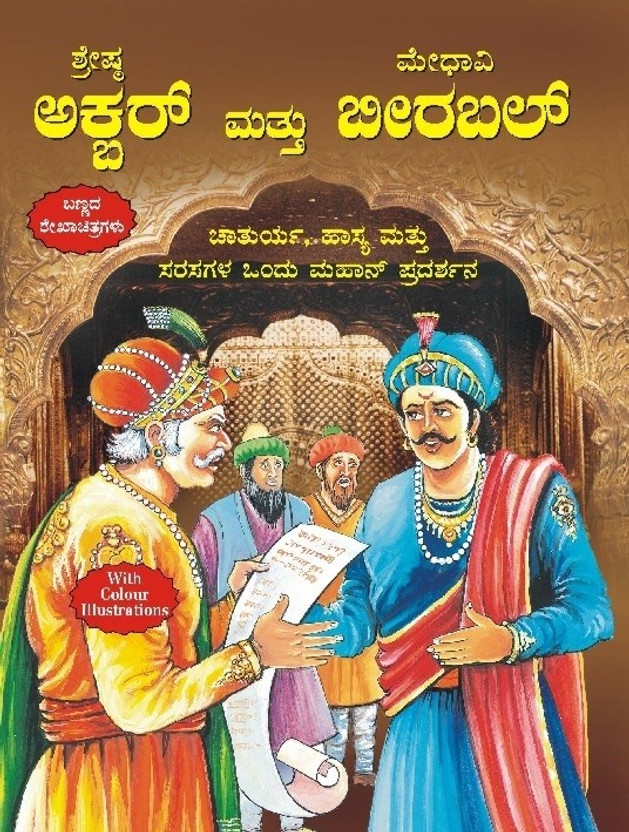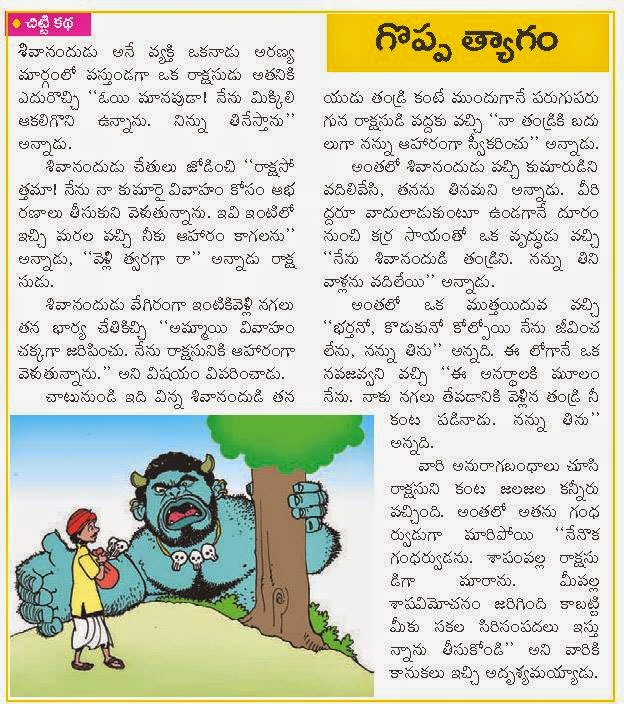
^ Ryder 1925, Translator's introduction: 'The Panchatantra contains the most widely known stories in the world. ^ Introduction, Olivelle 2006, quoting Edgerton 1924. #PANCHATANTRA STORIES IN KANNADA LANGUAGE PDF SERIES#
^ Doris Lessing, Problems, Myths and Stories, London: Institute for Cultural Research Monograph Series No.ISBN978-3-3., Quote: 'Pancatantra (Hindu text).' A Communion of Subjects: Animals in Religion, Science, and Ethics. At this date, however, many of the individual stories were already ancient.' ^ Jacobs 1888, Introduction, page xv Ryder 1925, Translator's introduction, quoting Hertel: 'the original work was composed in Kashmir, about 200 B.C.Pañcatantra: The Book of India's Folk Wisdom. ^ a b c d e f g Patrick Olivelle (1999).
 ^ a b c d e f g Panchatantra: Indian Literature, Encyclopaedia Britannica. ^ Johannes Hertel (1915), The Panchatantra : a collection of historic Hindu tales in its oldest recension, the Kashmirian, entitled Tantrakhyayika, Harvard University Press, page 1. Pondering on these facts leads to reflection on the fate of books, as chancy and unpredictable as that of people or nations. There were at least twenty English translations in the hundred years before 1888. Anyone with any claim to a literary education knew that the Fables of Bidpai or the Tales of Kalila and Dimna â these being the most commonly used titles with us â was a great Eastern classic. Until comparatively recently, it was the other way around. it is safe to say that most people in the West these days will not have heard of it, while they will certainly at the very least have heard of the Upanishads and the Vedas. The aged man rises and profusely thanks the thief, requesting the intruder to take whatever he desires. He feels grateful to the thief for making his young wife hold him at last. She is scared, turns over, and for security embraces the man. One night, while she sleeps in the same bed with her back facing the old man, a thief enters their house. The young woman detests his appearance so much that she refuses to even look at him let alone consummate their marriage. For example, in the fable The Old Man the Young Wife, the text relates a story wherein an old man marries a young woman from a penniless family. Some present fables that demonstrate how different characters have different needs and motives, which is subjectively rational from each character's viewpoint, and that addressing these needs can empower peaceful relationships even if they start off in a different way. The fables in the third book, as well as others, do not strictly limit to matters of war and peace. Olivelle and other scholars state that regardless of who the author was, it is likely 'the author was a Hindu, and not a Buddhist, nor Jain', but it is unlikely that the author was a devotee of Hindu god Vishnu because the text neither expresses any sentiments against other Hindu deities such as Shiva, Indra and others, nor does it avoid invoking them with reverence. Based on the content and mention of the same name in other texts dated to ancient and medieval era centuries, most scholars agree that Vishnu Sharma is a fictitious name. Some South Indian recensions of the text, as well as Southeast Asian versions of Panchatantra attribute the text to Vasubhaga, states Olivelle. It is unclear, states Patrick Olivelle, a professor of Sanskrit and Indian religions, if Vishnu Sharma was a real person or himself a literary invention. He is stated to be teaching the principles of good government to three princes of Amarasakti. The prelude section of the Panchatantra identifies an octogenarian Brahmin named Vishnu Sharma (IAST: Viá¹£á¹uÅarman) as its author. In Laos, a version is called Nandaka-prakarana, while in Thailand it has been referred to as Nang Tantrai. Several versions of the text are also found in Indonesia, where it is titled as Tantri Kamandaka, Tantravakya or Candapingala and consists of 360 fables. In Germany, its translation in 1480 by Anton von Pforr has been widely read. Most European versions of the text are derivative works of the 12th-century Hebrew version of Panchatantra by Rabbi Joel.
^ a b c d e f g Panchatantra: Indian Literature, Encyclopaedia Britannica. ^ Johannes Hertel (1915), The Panchatantra : a collection of historic Hindu tales in its oldest recension, the Kashmirian, entitled Tantrakhyayika, Harvard University Press, page 1. Pondering on these facts leads to reflection on the fate of books, as chancy and unpredictable as that of people or nations. There were at least twenty English translations in the hundred years before 1888. Anyone with any claim to a literary education knew that the Fables of Bidpai or the Tales of Kalila and Dimna â these being the most commonly used titles with us â was a great Eastern classic. Until comparatively recently, it was the other way around. it is safe to say that most people in the West these days will not have heard of it, while they will certainly at the very least have heard of the Upanishads and the Vedas. The aged man rises and profusely thanks the thief, requesting the intruder to take whatever he desires. He feels grateful to the thief for making his young wife hold him at last. She is scared, turns over, and for security embraces the man. One night, while she sleeps in the same bed with her back facing the old man, a thief enters their house. The young woman detests his appearance so much that she refuses to even look at him let alone consummate their marriage. For example, in the fable The Old Man the Young Wife, the text relates a story wherein an old man marries a young woman from a penniless family. Some present fables that demonstrate how different characters have different needs and motives, which is subjectively rational from each character's viewpoint, and that addressing these needs can empower peaceful relationships even if they start off in a different way. The fables in the third book, as well as others, do not strictly limit to matters of war and peace. Olivelle and other scholars state that regardless of who the author was, it is likely 'the author was a Hindu, and not a Buddhist, nor Jain', but it is unlikely that the author was a devotee of Hindu god Vishnu because the text neither expresses any sentiments against other Hindu deities such as Shiva, Indra and others, nor does it avoid invoking them with reverence. Based on the content and mention of the same name in other texts dated to ancient and medieval era centuries, most scholars agree that Vishnu Sharma is a fictitious name. Some South Indian recensions of the text, as well as Southeast Asian versions of Panchatantra attribute the text to Vasubhaga, states Olivelle. It is unclear, states Patrick Olivelle, a professor of Sanskrit and Indian religions, if Vishnu Sharma was a real person or himself a literary invention. He is stated to be teaching the principles of good government to three princes of Amarasakti. The prelude section of the Panchatantra identifies an octogenarian Brahmin named Vishnu Sharma (IAST: Viá¹£á¹uÅarman) as its author. In Laos, a version is called Nandaka-prakarana, while in Thailand it has been referred to as Nang Tantrai. Several versions of the text are also found in Indonesia, where it is titled as Tantri Kamandaka, Tantravakya or Candapingala and consists of 360 fables. In Germany, its translation in 1480 by Anton von Pforr has been widely read. Most European versions of the text are derivative works of the 12th-century Hebrew version of Panchatantra by Rabbi Joel. 
The book is also known as The Fables of Bidpai (or Pilpai in various European languages, Vidyapati in Sanskrit) or The Morall Philosophie of Doni (English, 1570). A New Persian version by Rudaki in the 12th century became known as KalÄ«leh o Demneh and this was the basis of Kashefi's 15th-century AnvÄr-i SuhaylÄ« (The Lights of Canopus), which in turn was translated into Humayun-namah in Turkish.

This became the basis for a Syriac translation as Kalilag and Damnag and a translation into Arabic in 750 CE by Persian scholar Abdullah Ibn al-Muqaffa as Kalīlah wa Dimnah. The earliest known translation into a non-Indian language is in Middle Persian (Pahlavi, 550 CE) by Burzoe.







 0 kommentar(er)
0 kommentar(er)
